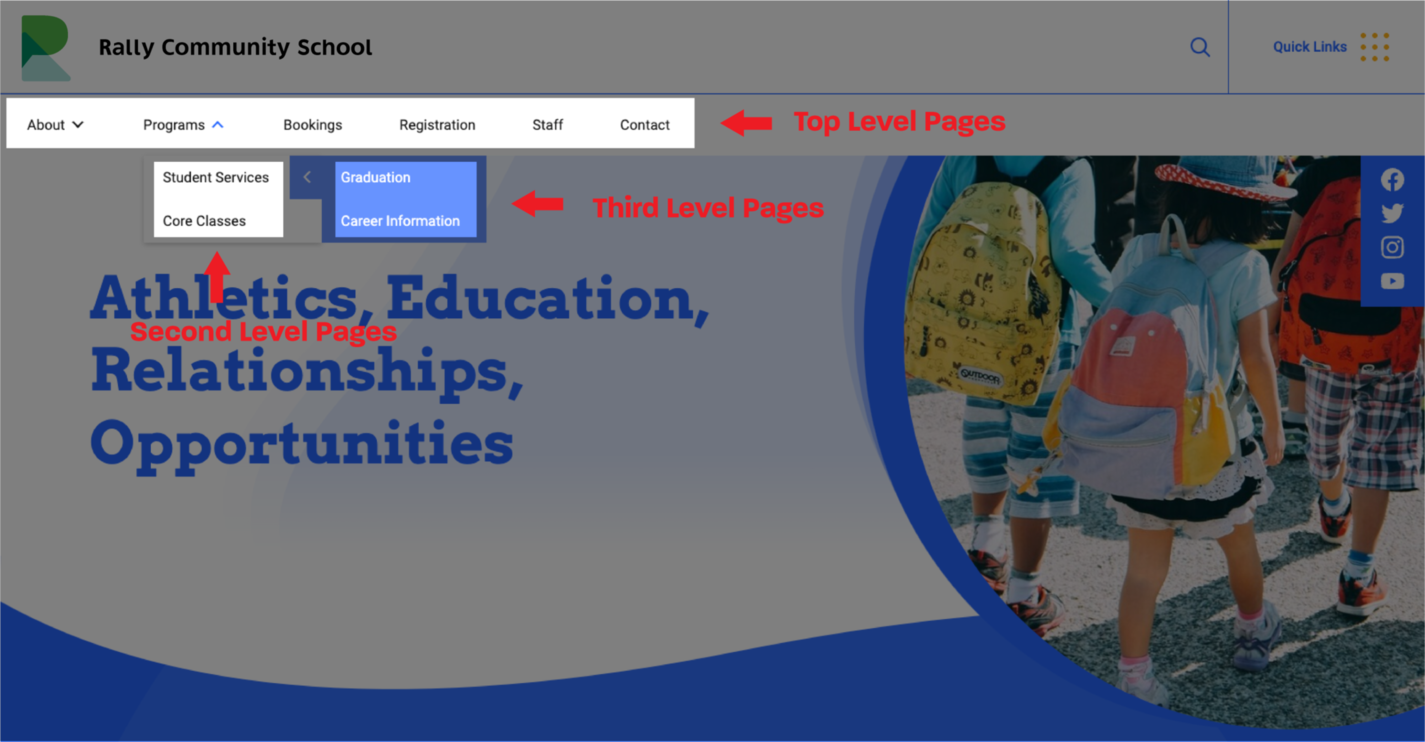Your school website is so important for communicating information to parents, students, and staff. It’s a complex place, with lots of little bits and pieces coming together to share information. If you know what those pieces are – and how to use them– you can turn your website into a power house. Let’s break it down!
How do Websites Work?
Just like your home has a unique address, each website has a unique domain. By typing that domain (https://rally.rallyonline.ca/, for example) into your browser, you can visit that website’s home page. Your website’s home page is the most-viewed page of your website. Think of it as the exterior of a home: you want it to be warm and welcoming so visitors will stay on your website.

Your school website is made up of a series of pages. You probably have a page about your programs, another page with your calendar, another with your school’s history, and so on. You’re reading this on a webpage right now. If you click the Back to Blog Button, you’ll be on a different page on the same website. Think of it like going from the kitchen to the dining room: you’re still at the same address, just in a different space with different content. Your school website is made up of a series of pages that are all linked together, like rooms in a house.
Header
Your header appears at the top of every page on your website. Your header contains everything your visitors need to navigate around your website. This is what school website headers look like on Rally:

With Rally, your school logo and name, menu, and quick links make up your header. The Search bar is usually in the header too. Rally automatically builds your header for you, based on the pages and Quick Links you add to your website. Your job is to ensure that your menu and Quick Links are ready with the information visitors want!
Menu
Your menu is one of the most important tools on your website. Visitors will use it to go from one page to another. Not only that, it’s visible on every single page. Visitors should be able to jump from any page to any other page using the menu. Keeping your menu easy to read is important. Think of your menu like your doors, hallways, and stairwells of your home. You want to make sure that visitors can go from one place to another easily, without getting lost.
To help visitors find what they’re looking for, keep your menu concise. Your page names should be short: “Programs” instead of “Learn About Our Programs.” Your menu should only include pages that are on your website. Don’t add a link to another website as a menu item or link directly to a document. That’s like opening a door in your home and winding up in a different city or walking into a wall. Rally has two specialized areas to keep your website organized: Quick Links for links to external websites and apps, and the Documents section for your PDFs and other files. Your menu is all about your school and should only contain pages on your website.
You can create seasonal top-level pages so it’s easy for parents to find relevant information about Graduation or Holiday Breaks.
Quick Links
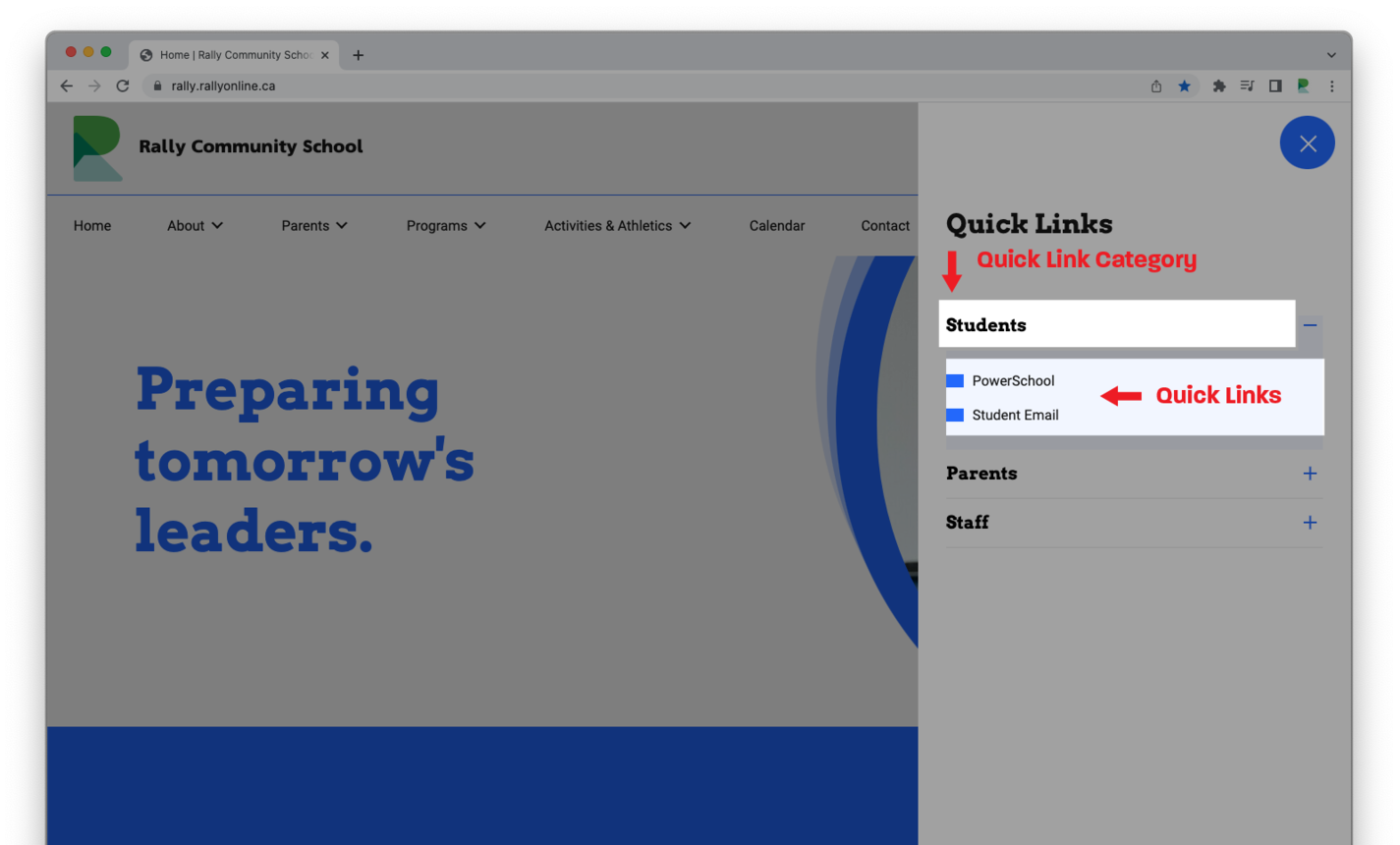
While your school website provides a lot of information for your community, there are other online apps and resources that your community uses throughout the school year. For example, parents and students may login to your student information management system or a fee payment system. These are external links, meaning they live on other websites, not your school website (the domain will be different). Your school website should have a dedicated section for you to link to relevant external websites. At Rally, we call this section Quick Links. You can create different categories (such as students, parents, and staff) for your Quick Links so it’s even easier for visitors to find what they’re looking for. Choose external links that are used frequently and include them in your Quick Links. And remember, your menu includes all the pages on your website so you usually don’t need to add your own pages as Quick Links.
Banner Image/Video
Most school websites have a large home page Banner Image or Video. This Banner is one of the first things that visitors to your website see: it’s a great opportunity to make a good first impression and welcome visitors to your website. Use authentic visuals (photographs or videos from your school, not stock content). Parents love to see your school spirit. With Rally, you can add multiple banner images. They’ll load randomly for visitors to keep your home page fresh. It’s a good idea to change up your home page banner every month or so, just so visitors have something new to see.
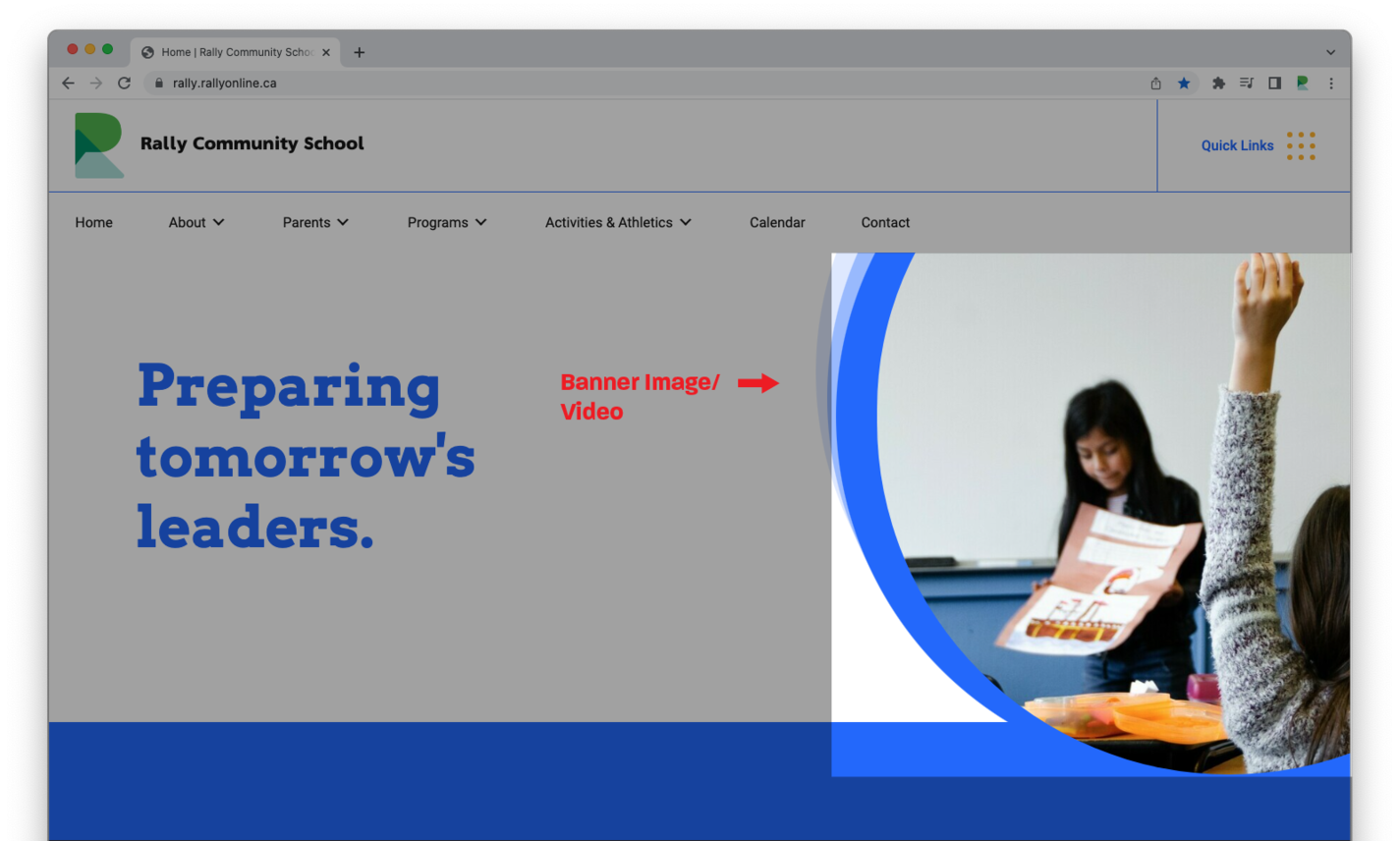
Choose authentic images that fit your banner space. They should be eye-catching and encourage visitors to explore more on the website. If you’re using a video, it’s best to remove the audio.
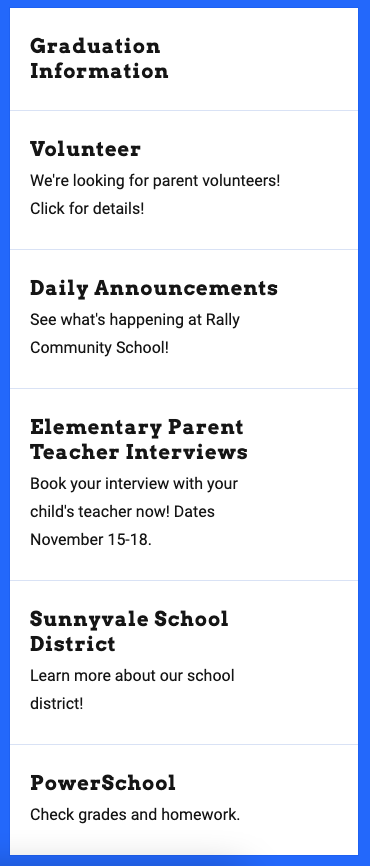
Enticers/Home Page Features
Your school website may have large buttons, feature areas, and other eye-catching sections where you can add important information you want visitors to see. At Rally, we call these Enticers, because they are attention-getting, high visibility buttons that entice visitors to click to the most important information. Use them for the most important information you want visitors to see or know they want to see.
You should be able to change these sections with the time of year (you can with Rally!), so you can make important information even easier for parents to find. Link to a page on your website, an external website, or even a document. If linking to an external website or document, ensure that it opens in a new tab or window so parents can easily click back to your website.
What Are Parents Searching for on School Websites?
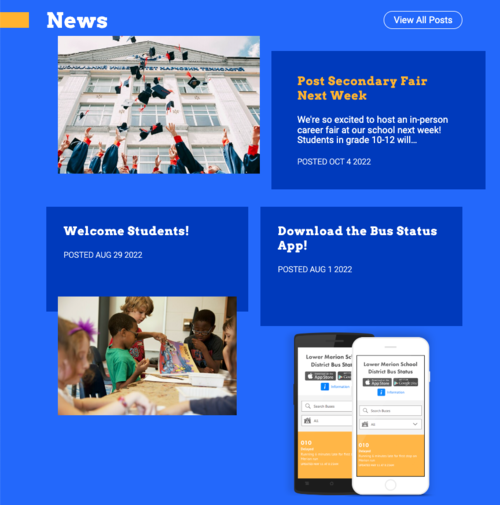
News
Most school websites feature a news blog on the home page. Parents want to know what’s happening at your school. Use your News section to share updates, feel good stories, and showcase your school spirit!
Your most recent posts should appear automatically at the top of your news section on your home page. With Rally, you can pin a post to the top of your news section to keep it visible no matter what date it was posted on. It’s a good habit to include an image to help the post stand out. Keep your News titles clear and to the point, so parents know what the story is about.
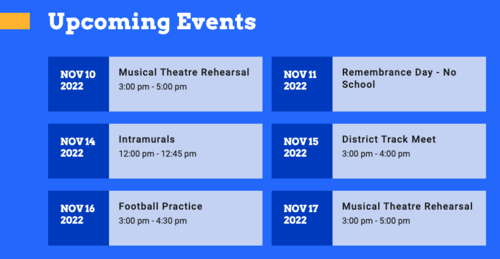
Upcoming Events
Just like with your news, your website may automatically preview the next few events from your website calendar on your home page. Parents can see what’s happening at-a-glance and click on an event for more information. It’s a good practice to keep your school’s calendar up to date. With Rally, your upcoming events will display on all pages across your school website.
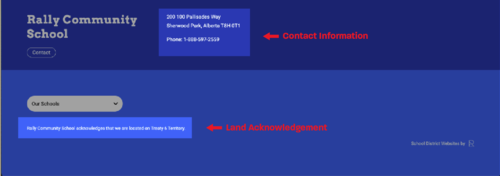
Footer
The Footer is visible on every page of your website. Like with the header, your website will usually pull this content together for you (Rally certainly does!). The industry standard is to have your contact information in the Footer. Rally websites have the option of adding a land acknowledgement statement as well.
Together, all these different pieces come together to make your school website the unique place it is! Take a look at your school website and see how you’re using these different pieces. Consider what ‘s most important to your audience, and use the different features of your website to ensure it’s easy to find.

